P-47 T-Bolt Carrier Launch
Mon Apr 07, 2008 9:36 pm
P-47Ds of the 73rd FS 318th FG launch from the USS Manila Bay CVE-61 on June 24, 1944 to Saipan.
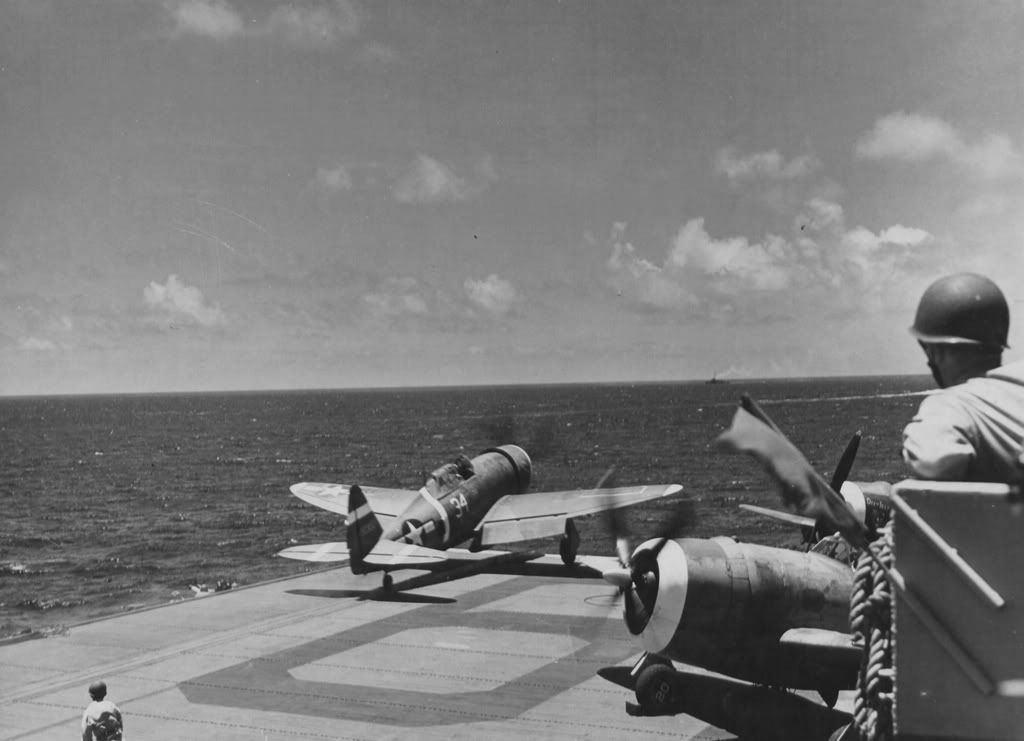
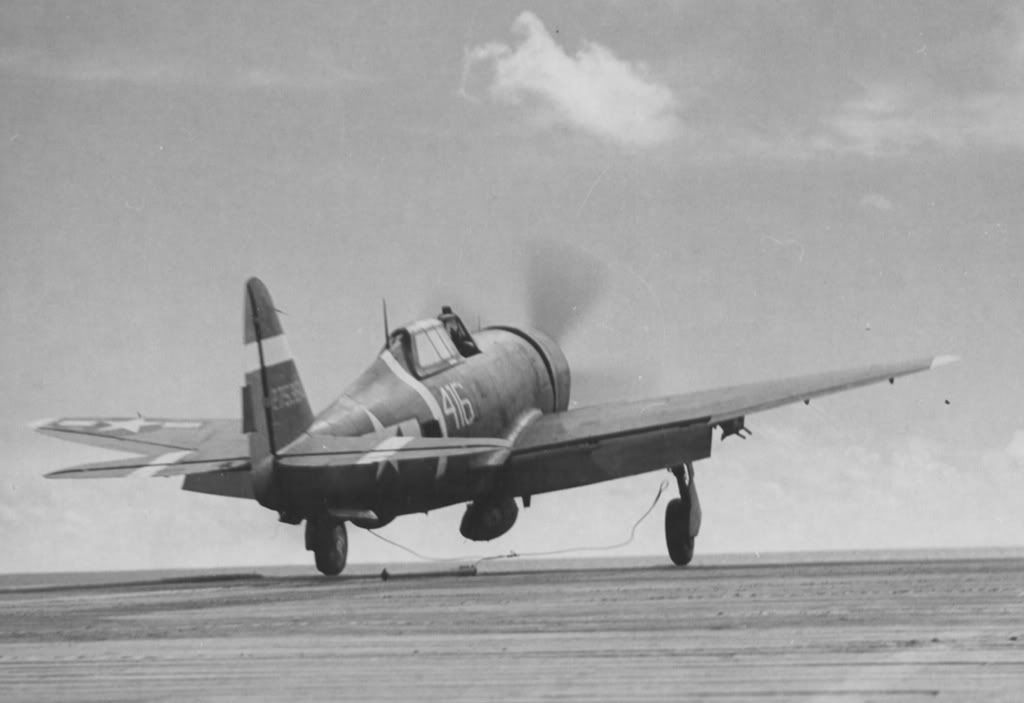
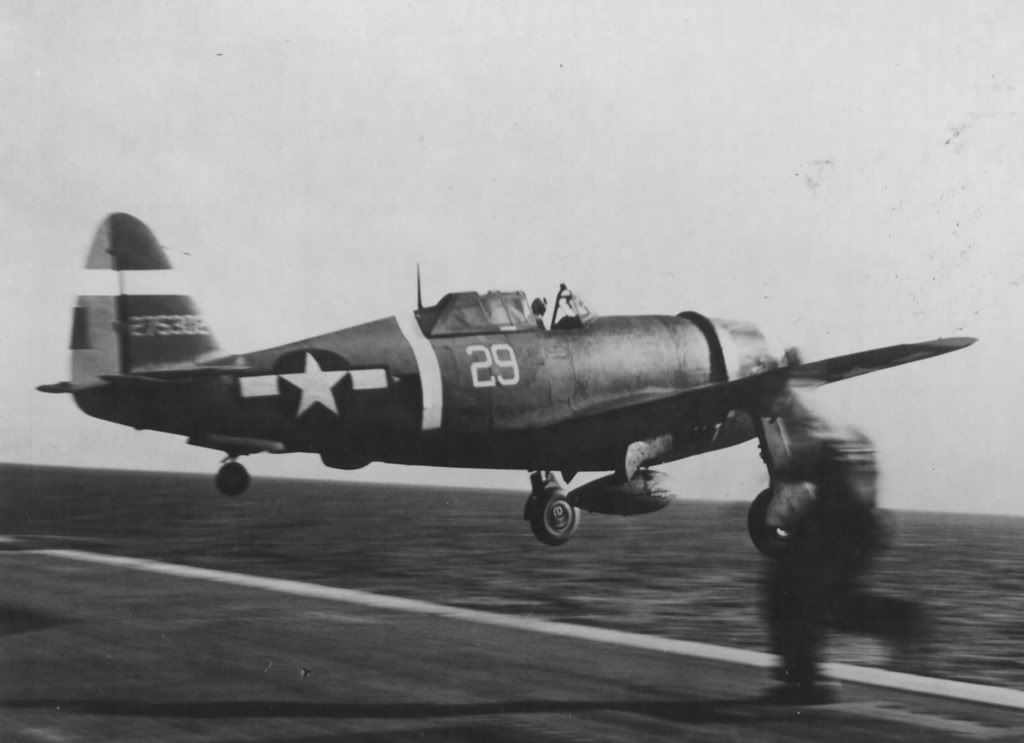



Tue Apr 08, 2008 5:46 am
wow,
I always assumed steam catapalts were a post war development to launch jets from carriers, but the second photo seems to clearly show a catapalt launch of a P47!
great stuff Jack - keep it coming!
regards
Mark Pilkington
I always assumed steam catapalts were a post war development to launch jets from carriers, but the second photo seems to clearly show a catapalt launch of a P47!
great stuff Jack - keep it coming!
regards
Mark Pilkington
Tue Apr 08, 2008 6:32 am
Mark_Pilkington wrote:wow,
I always assumed steam catapalts were a post war development to launch jets from carriers, but the second photo seems to clearly show a catapalt launch of a P47!
great stuff Jack - keep it coming!
regards
Mark Pilkington
FG-1D and F4U-1 Corsairs as well as SBD-5 that I have worked on all had cat hooks installed. The P-47 setup used MLG scissors made special with a hook forged into the upper scissor. This is where the cable attached.
Rich
Tue Apr 08, 2008 6:38 am
Mark_Pilkington wrote:I always assumed steam catapalts were a post war development to launch jets from carriers, but the second photo seems to clearly show a catapalt launch of a P47!
The 'accelerators' on the bow of (1935) HMS Ark Royal are obvious due to their ends exceeding the sloped bow. (This was far from the first catapult or accellaraor equipped carrier.)
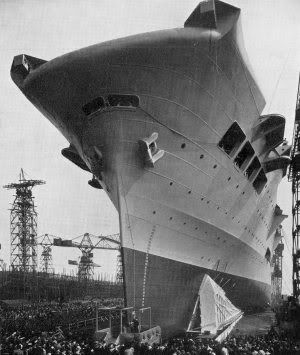

The issue with the RN accelerators was that the aircraft had to be loaded onto a cradle, making launching a slow and complex process. The invention of the tail-down strop catapult launch was a much simpler and more effective solution, scattering the ocean floors of the world with cables...
EDIT: Very interesting 51 Fixer...
???
Tue Apr 08, 2008 7:34 am
The catapults were hydraulic powered. Steam came later on.
The "bump's" on the end of the bow (I assume) are a early form of bridal arrestors (or a Britsh attempt to ugglie the ship up a bit) which were standard equiptment until the advert of the hook up directly to the nose wheel. By this time in the war lauching AAF fighters off a carrier was a no sweat evolution.
The "bump's" on the end of the bow (I assume) are a early form of bridal arrestors (or a Britsh attempt to ugglie the ship up a bit) which were standard equiptment until the advert of the hook up directly to the nose wheel. By this time in the war lauching AAF fighters off a carrier was a no sweat evolution.
Re: ???
Tue Apr 08, 2008 7:43 am
Jack Cook wrote:The "bump's" on the end of the bow (I assume) are a early form of bridal arrestors (or a Britsh attempt to ugglie the ship up a bit) which were standard equiptment until the advert of the hook up directly to the nose wheel.
No, as I said, the aircraft was mounted in flying position on a trolley or cradle which travelled in the catapult and launched the aircraft, with the trolley hitting buffers at the end and staying aboard ship, to be wound back and re-used.
Rather complex, what? Slow, and there are very few photos of them in action (I can think of only one.)
A bridal arrestor is a Private Eye hired by the wife - I think you mean bridle, or strop.
Tue Apr 08, 2008 8:26 am
Found two photos of HMS Ark Royal's starboard hydraulic accelerator (catapult) in use.
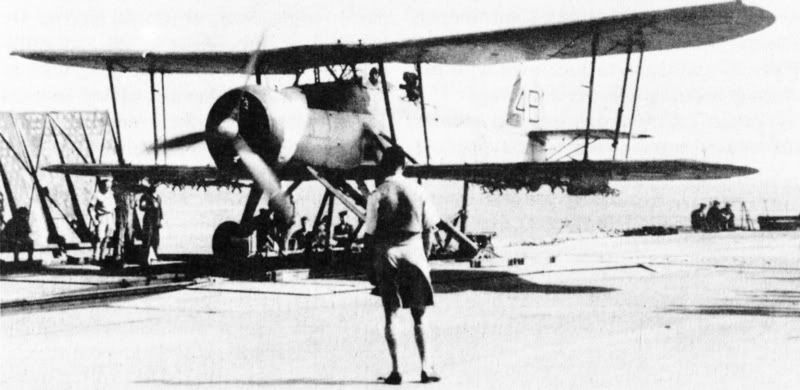
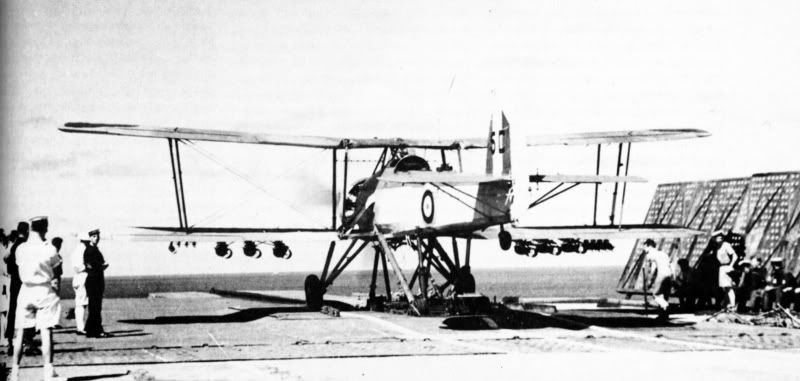
Photos credit Cdr R N Everett, from Ray Sturtivant's 'The Swordfish Story'.
And details;
"...provided with two catapults that could launch 12.000lb at 66kts."
http://uboat.net/allies/warships/class. ... 9&navy=HMS
By the start of W.W.II all RN carriers were fitted with hydraulic-powered accelerators.
Interestingly, experimentation in Germany, the US and Britain had run through compressed air powered catapults and flywheel powered prototypes, before standardising on hydrallic until the 1950s when steam took over.
And back on topic:
http://www.americanheritage.com/article ... 4_26.shtml


Photos credit Cdr R N Everett, from Ray Sturtivant's 'The Swordfish Story'.
And details;
"...provided with two catapults that could launch 12.000lb at 66kts."
http://uboat.net/allies/warships/class. ... 9&navy=HMS
By the start of W.W.II all RN carriers were fitted with hydraulic-powered accelerators.
Interestingly, experimentation in Germany, the US and Britain had run through compressed air powered catapults and flywheel powered prototypes, before standardising on hydrallic until the 1950s when steam took over.
And back on topic:
They made almost all their launches with flush-deck catapults, and their success led the Navy to take a second look at catapults for fleet carriers as well, as a space-saving measure: By catapulting the first few planes of each strike, the big ships could save enough space for a deck park. The Army Air Forces equipped all its fighter planes destined for the Pacific Theater with catapult fittings, and many of them were launched from carriers. The naval historian Norman Friedman called the rise of the catapult perhaps the most important wartime development in carrier operations.
http://www.americanheritage.com/article ... 4_26.shtml
Tue Apr 08, 2008 9:54 am
note 2nd to last pic.... what with the heavy gauge cable between the p-47's landing gear??
???
Tue Apr 08, 2008 1:14 pm
what with the heavy gauge cable between the p-47's landing gear??
That's the bridle